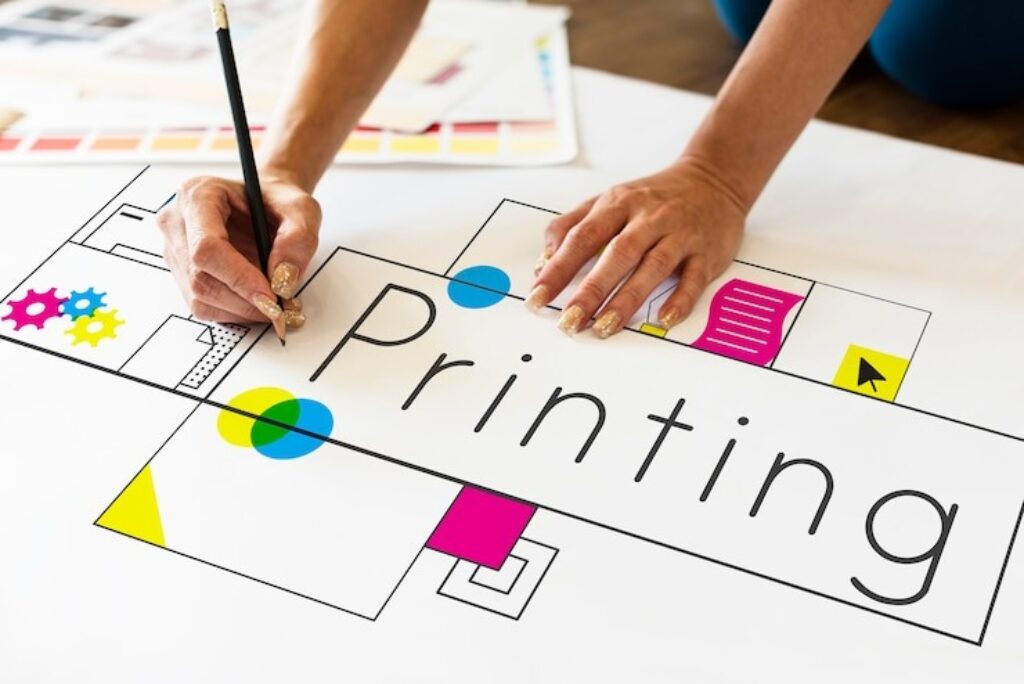
In an era where digital transformation dictates progress, the printing industry has not been left behind. The advent and evolution of web to print technology (W2P) stands as a testament to this shift. This transformative technology has redefined the boundaries and operational frameworks of traditional printing, ushering in a new era of convenience, efficiency, and customization.
This blog post aims to explore the journey of web to print software within the printing industry, shedding light on its inception, growth, and the profound impact it has had on businesses and consumers alike.
Table of Contents
The Genesis
The journey of web to print technology began in the late 1990s, as the internet started to become a staple in business operations. Initially, W2P was a simple tool designed to facilitate the submission of print jobs over the internet. It eliminated the need for physical presence or the exchange of tangible proofs between printers and clients, setting the stage for a revolution in the printing industry.
This initial phase was critical, as it introduced the concept of remote printing services, allowing businesses to leverage the growing power of the internet to streamline their operations. It was a period of exploration and experimentation, where the potential for digital platforms to transform traditional industries began to be recognized.
Early Days

Source: freepik.com
The introduction of web to print technology was met with skepticism. Traditionalists doubted its ability to replicate the quality and personalized service of conventional printing. However, as the internet became more ingrained in business and personal lives, these doubts slowly dissipated. Early adopters of W2P technology began to see significant benefits in terms of reduced turnaround times and lower costs, leading to a gradual acceptance and integration of the technology into mainstream printing operations.
This period of skepticism served as a driving force for innovators and developers to improve and refine their W2P offerings. They focused on enhancing user interfaces, streamlining the order process, and ensuring high-quality print results that could match or surpass traditional methods. As success stories began to emerge, the industry’s perception shifted from doubt to curiosity, and eventually to enthusiasm for the possibilities that web to print technology presented.
Technological Advancements
The growth of web to print technology can be attributed to several key technological advancements. The improvement in web technologies and the introduction of cloud computing provided the infrastructure needed for more sophisticated W2P platforms. These platforms offered not just order submission but also online design, real-time proofing, and integration with existing business systems, significantly expanding the scope and appeal of W2P solutions.
The era of technological advancements also saw the rise of high-speed internet and advancements in digital printing technology, which together made it possible to offer a wider range of products and faster turnaround times than ever before. Innovations such as HTML5 and CSS3 enabled richer, more interactive online design experiences, making the design process more intuitive and accessible to users without professional design skills.
Customization and Personalization

Source: freepik.com
One of the most significant impacts of web to print technology has been its ability to meet the growing consumer demand for customization and personalization. W2P platforms have made it possible for consumers and businesses to design their print materials online, choosing from a wide array of templates and design options.
This shift towards personalized printing has opened up new markets for the printing industry, catering to sectors such as marketing, retail, and event planning, among others. The trend towards individualization in consumer behavior further accelerated the adoption of web to print solutions, as customers sought unique and personal ways to express themselves through customized products.
Businesses, recognizing the value of personalized marketing materials, have increasingly turned to W2P solutions to create distinctive branding and promotional items. As a result, the boundary between the printing industry and the wider creative and marketing ecosystems has blurred, creating a more integrated and dynamic landscape for digital commerce.
Impact on Business Operations
For print service providers, the adoption of web to print technology has led to a transformation in business operations. W2P has streamlined the printing process, from order submission to delivery, reducing manual intervention and the potential for errors. This efficiency gain has not only improved customer satisfaction but also allowed printing businesses to scale operations and enter new markets with ease.
Additionally, the integration of W2P systems with back-end business processes, such as inventory management and logistics, has further optimized operations, reducing waste and enhancing profitability.
This digital transformation has enabled print providers to offer a broader range of services, from variable data printing to on-demand production, thus meeting the evolving needs of their customers. The ability to track and analyze customer data has also provided invaluable insights, enabling businesses to tailor their offerings and improve the customer experience continuously.
Role of Mobile Technology

Source: freepik.com
The proliferation of smartphones and tablets has further propelled the evolution of web to print technology. Mobile-friendly W2P solutions have made it possible for users to design, order, and manage print jobs from anywhere, at any time. This accessibility has broadened the customer base for W2P services, making printing more convenient than ever before.
The rise of mobile technology has necessitated the development of responsive web design and mobile applications, ensuring a seamless and user-friendly experience on smaller screens. This shift has also encouraged the adoption of cloud-based solutions, allowing users to save their designs and projects online and access them across multiple devices.
As a result, the convergence of mobile technology and web to print solutions has not only enhanced accessibility but also fostered a more connected and flexible approach to printing, catering to the lifestyle and expectations of modern consumers.
In Summary
The evolution of web to print technology in the printing industry is a vivid illustration of how digital transformation can revolutionize a traditional sector. W2P has not only enhanced operational efficiency and customer satisfaction but has also opened up new avenues for creativity, personalization, and growth.
As we move forward, the continued innovation and integration of emerging technologies promise to keep the industry evolving, ensuring that web to print remains at the forefront of the digital revolution in printing.







